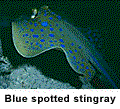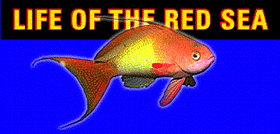Total length: 2300 kilometers
Widest
point: 350
kilometers
Maximum
depth: 2100
meters
20 percent of the fish species are endemic.
Over 400 kinds of coral.


Any attempt to describe the marine life of the Red Sea risks drowning in superlatives--it is extraordinary, unparalleled, marvellous, incredible, and truly wondrous. It was not by chance that Jacques Cousteau chose this region to first introduce the world to undersea life, and by the same token it is not by chance that so many people become diving fanatics during a visit to Sinai.
The exceptional richness of marine life in the Red Sea, and in the Gulf of Aqaba in particular, is due to an unusual combination of environmental factors. First, the Red Sea is comparatively sheltered and calm: its currents are gentle and regular, its tides almost non-existent, and its temperature warm and steady. While its waters run quite deep, they are warmed by volcanic heat emanating from the sea bed. The result of all these factors is an environment ideally suited to the complex and delicate ecosystem of coral reefs.
Even among the world's most celebrated reef systems, that of the Sinai stands out for its unusual wealth of certain kinds of marine life--most notably, coral itself. The sheer abundance of corals, many of exceptional size and color, makes diving in Sinai an experience of almost magical intensity. But beyond the corals is a nearly infinite variety of marine species, including such notable creatures as Napoleon wrasse, brilliant orange coral groupers, enormous gorgonian fans, moray eels and hammerhead sharks, elaborate lionfish and majestic, swooping giant manta rays.

What about all those sharks?
Odds are that you
will see them, and if you've never had the experience of
diving with these marvellous creatures then you are in
for the experience of a lifetime. You might also feel a
bit nervous. Always remember that sharks attack only if
they are either feeding or feel threatened. Because
humans bear no resemblance (thankfully) to their usual
diet, sharks don't consider us prey. If a shark feels
threatened, it will let you know by swimming in a heavy
side-to-side motion and by thrashing its tail. The best
thing to do is descend to the bottom or hug a wall, stay
still, and above all don't panic. The shark will relax
and move on.